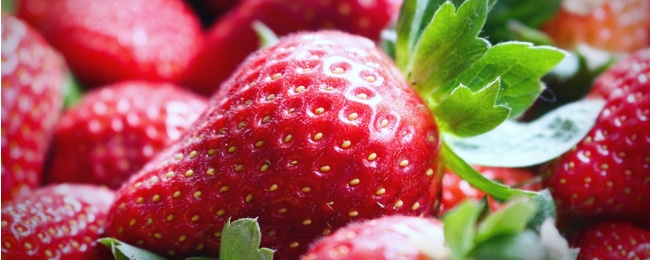Whether you have your own garden with new strawberry plants or plan to visit a pick-your-own garden for the first time, you might have some questions about when you can pick them and how to tell when they are ripe. This article will help you become more familiar with the strawberry life cycle, and also help you understand how to store them properly. Once you become more familiar with the life cycle of this fruit, you may be inclined to start planting strawberries yourself!
You may also be interested in learning about how broccoli grow. If so, make sure to check out our article on broccoli’s different growth stages.

1. Harvesting Season
Strawberry plants grow flowers and fruit when temperatures are between 60 and 80 degrees Fahrenheit. This usually falls between April and July but can last for a more extended portion of the year in the warmest climates.
Typically, during the growing year, the greatest abundance of berries falls in June, which is why there is a subtype known as June bearing strawberries. Other varieties will start bearing fruit in early spring and will continue creating fruit up until your first frost; these are known as the ever-bearing or day-neutral types.
If you are growing strawberries, be aware of your climate zone, the variety you have, and harvest seasons of pick-your-own-farms near you, and you will be able to get a feel for when your plants should begin producing fruit.
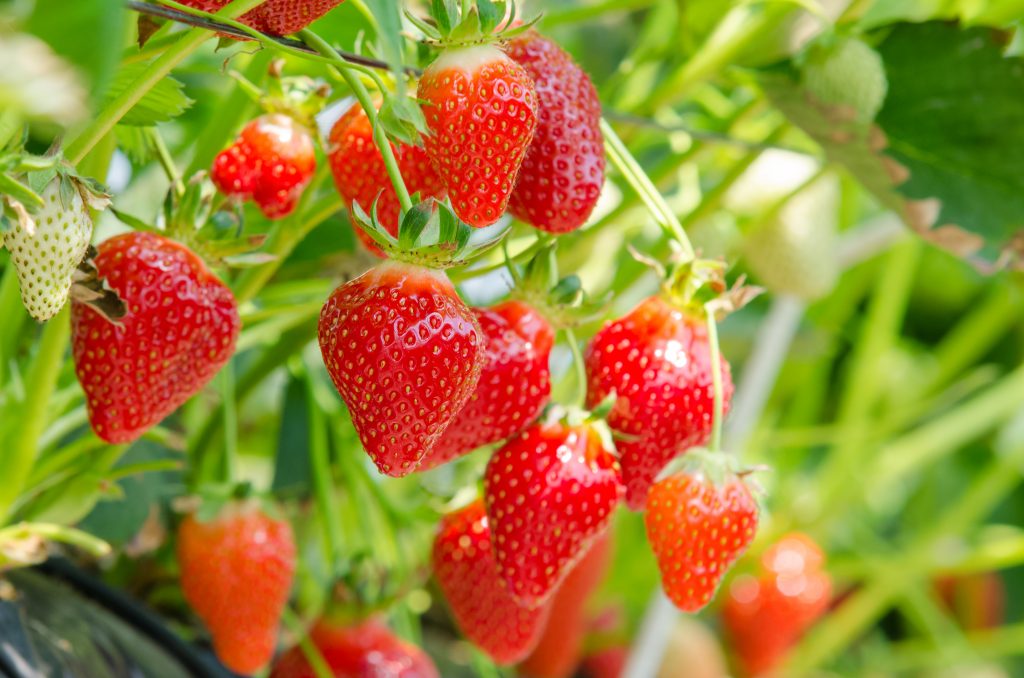
2. Growth Stages
Strawberry plants, including new plants, create a flowering stalk called an inflorescence. The inflorescence contains a cluster of individual flowers. The number of flowers in a group and the specific manner in which the flowering stalks branch is unique to each variety.
Usually, they create their flowers in a flush, rather than all at once. Staggering the number of flowers that are open at one time is something they do naturally. This gives each flower greater opportunity to become successfully pollinated, which improves their reproductive success. In other words, this increases the yield of the plants in your garden.
June bearing types will stop flowering once the day length, or photoperiod, is greater than 10 hours.
The most common pollinators are honey bees. Once the flower has been successfully pollinated, the process of fruit maturation begins.
Soil fertility, sunlight, warmth, and water all impact the rate that your plants will produce fully mature berries. This process usually takes about four weeks, but it can extend an additional week or two.
Strawberries are unique because their fruit is not a true fruit. True fruits enclose their seeds within the fruit. Rather, they contain their seeds on the outside; botanically speaking, their fruit is called a receptacle.
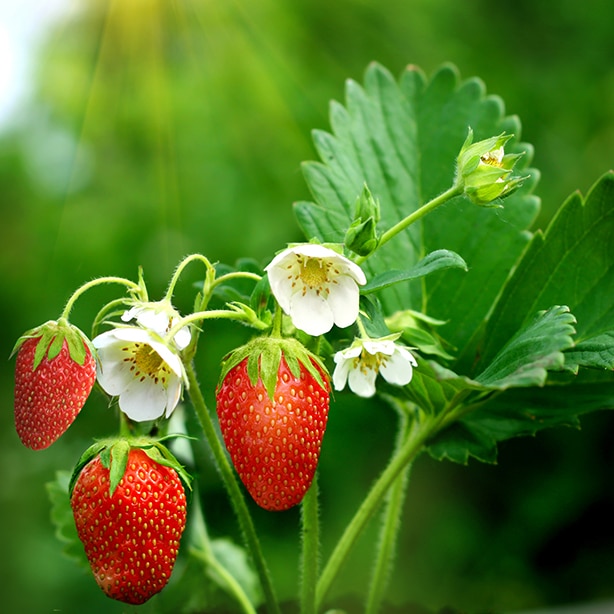
3. How to Know When They Are Ripe
Since the strawberry size is specific to variety, the best way to know when it is fully ripen is to look at its color. As they ripen, the fruit (for ease of word choice) will transition from white to light pink with white spots, to wholly pink, to red, to burgundy when they are ready to pick.
The best time to pick one is when the berry is entirely red and firm.
If you harvest the berry while it has white spots, the berry will lack its full flavor and sweetness. If you wait until the berry is dark, it will begin to form soft purple spots and expire.
You will notice as you look through your patch that the strawberries will all be somewhere along the spectrum of fruit maturation – one ripe berry might be right next to another immature berry, which can be next to a new flower!
You can visit your garden daily and look for fresh fruit, which is the best part of growing them! You can also visit a pick-your-own farm many times throughout their open season to harvest fresh berries.
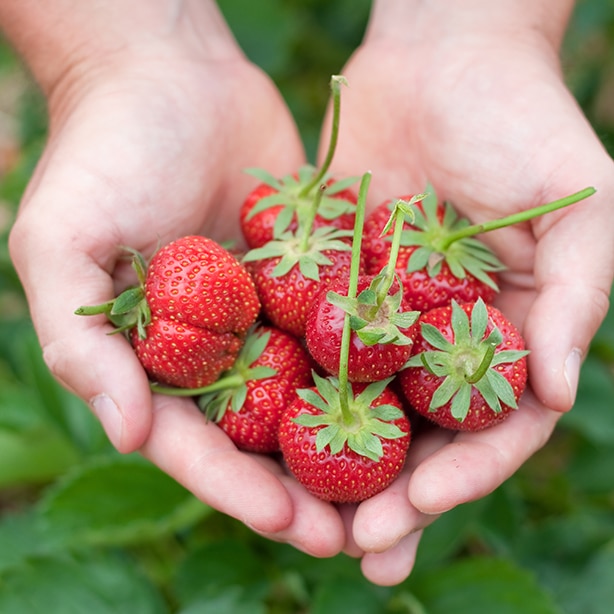
4. How to Harvest
Picking strawberries from plants is very easy, and the only tools required are your fingers.
Grab hold of the flowering stalk behind the fruit and pull. The plants are very strong and can withstand a lot of pressure as you pull; don’t worry about uprooting them. They will pop off the plants.
You can use any type of clean container to hold onto your harvest as you are picking them. Try to pick only the best berries and avoid ones that still are not completely red. If you have some that are softening, it just means you need to harvest more frequently!
If you notice any that are too ripe and unsalvageable, then you should remove them and place them in their own container and compost them. This helps keep your garden clean and your plants productive.
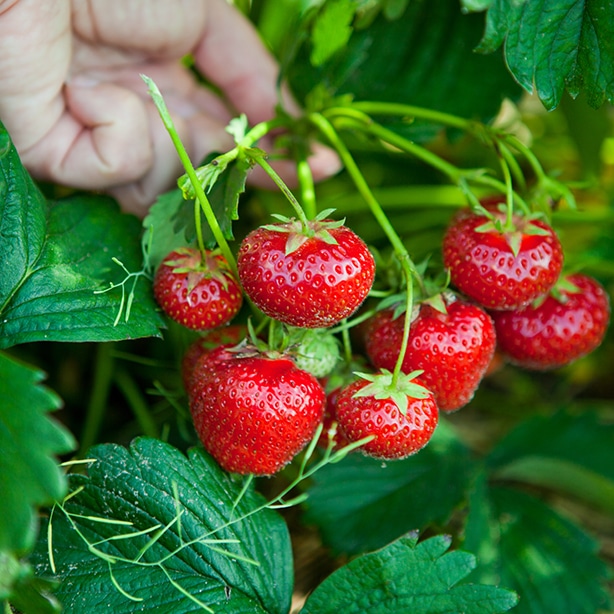
5. How to Store
Strawberries will store best under refrigeration, between 40 and 55 degrees Fahrenheit.
If you plan to eat them fresh, it is best to keep them stacked only three berries high in a container, so you can frequently check them for soft spots and discard berries that have gone by. If you have a large number of berries and plan to preserve them, they will be okay stored in a bulk format in a large container in your fridge for up to three days.
It is best not to rinse berries before storing them. So if it has rained on the plants right before you picked the berries, be sure to let the berries dry completely before refrigerating. You should rinse your berries thoroughly before using them in any recipe, and cut out any soft spots.
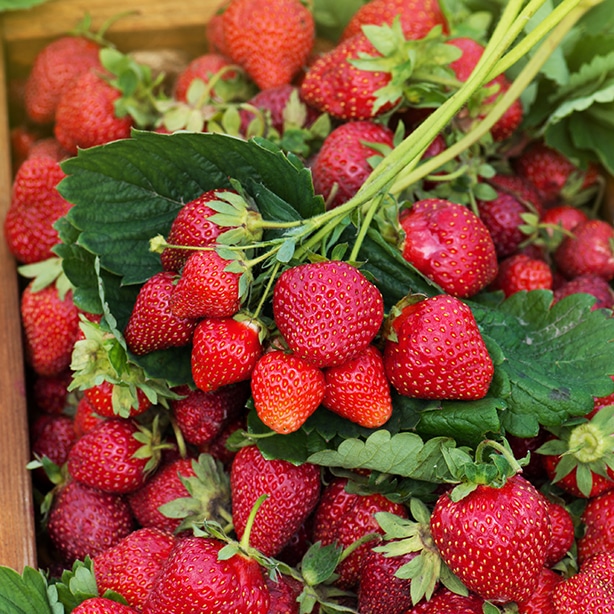
6. What to Do With Them After Harvest
Get creative! They can be eaten fresh whole or sliced, used in desserts, as a salad, yogurt or oatmeal topping, or in smoothies and ice cream.
To extend your fresh harvest so that it can be eaten throughout the year, you can freeze them by placing them whole or sliced on a baking sheet in the freezer for a few hours, then moving them into a freezer-safe container. This will prevent the berries from clumping together when frozen.
Strawberries can also be sliced and dehydrated, freeze-dried, and made into jams, jellies, and syrups

